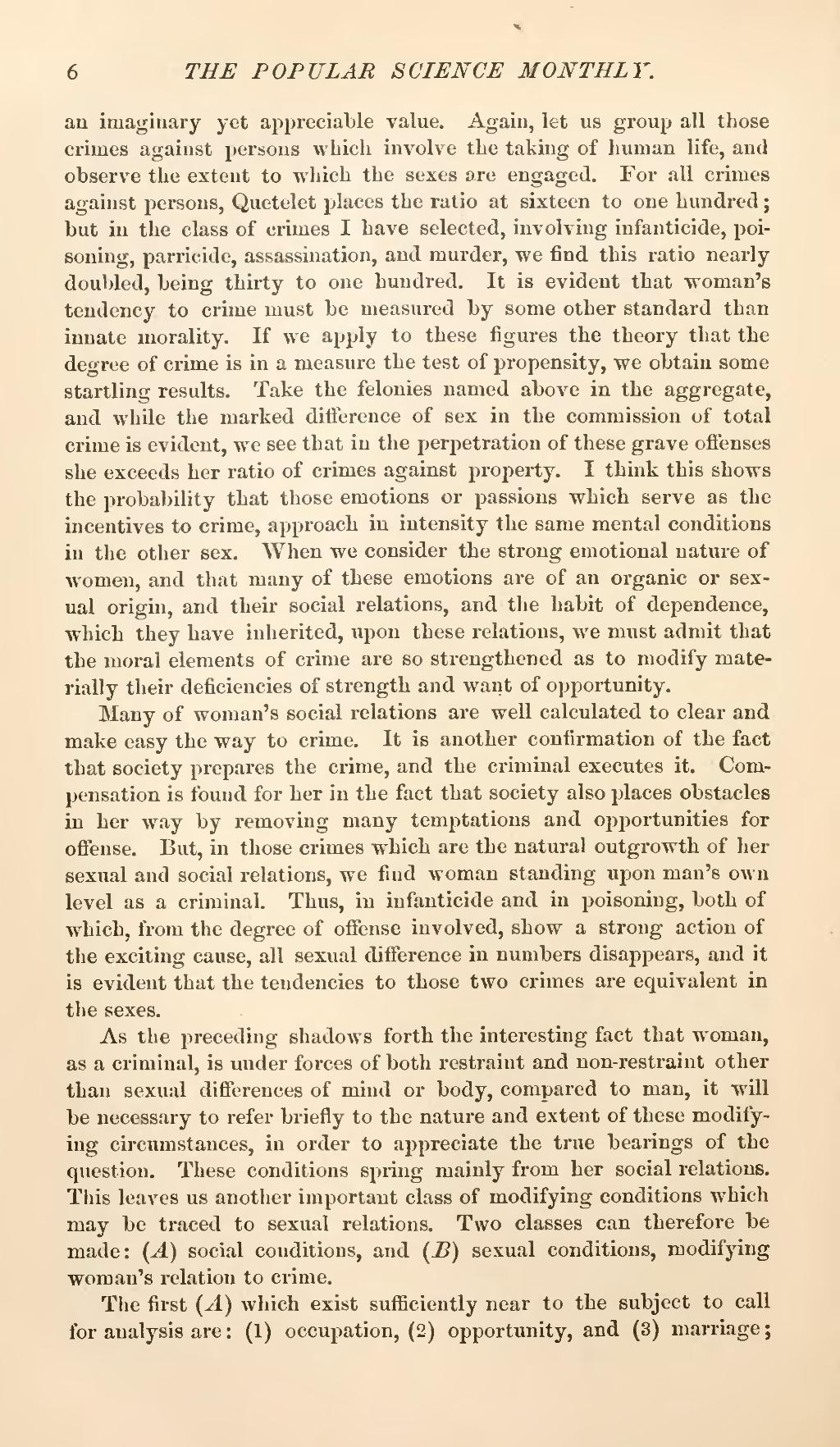an imaginary yet appreciable value. Again, let us group all those crimes against persons which involve the taking of human life, and observe the extent to which the sexes are engaged. For all crimes against persons, Quetelet places the ratio at sixteen to one hundred; but in the class of crimes I have selected, involving infanticide, poisoning, parricide, assassination, and murder, we find this ratio nearly doubled, being thirty to one hundred. It is evident that woman's tendency to crime must be measured by some other standard than innate morality. If we apply to these figures the theory that the degree of crime is in a measure the test of propensity, we obtain some startling results. Take the felonies named above in the aggregate, and while the marked difference of sex in the commission of total crime is evident, we see that in the perpetration of these grave offenses she exceeds her ratio of crimes against property. I think this shows the probability that those emotions or passions which serve as the incentives to crime, approach in intensity the same mental conditions in the other sex. When we consider the strong emotional nature of women, and that many of these emotions are of an organic or sexual origin, and their social relations, and the habit of dependence, which they have inherited, upon these relations, we must admit that the moral elements of crime are so strengthened as to modify materially their deficiencies of strength and want of opportunity.
Many of woman's social relations are well calculated to clear and make easy the way to crime. It is another confirmation of the fact that society prepares the crime, and the criminal executes it. Compensation is found for her in the fact that society also places obstacles in her way by removing many temptations and opportunities for offense. But, in those crimes which are the natural outgrowth of her sexual and social relations, we find woman standing upon man's own level as a criminal. Thus, in infanticide and in poisoning, both of which, from the degree of offense involved, show a strong action of the exciting cause, all sexual difference in numbers disappears, and it is evident that the tendencies to those two crimes are equivalent in the sexes.
As the preceding shadows forth the interesting fact that woman, as a criminal, is under forces of both restraint and non-restraint other than sexual differences of mind or body, compared to man, it will be necessary to refer briefly to the nature and extent of these modifying circumstances, in order to appreciate the true bearings of the question. These conditions spring mainly from her social relations. This leaves us another important class of modifying conditions which may be traced to sexual relations. Two classes can therefore be made: (A) social conditions, and (B) sexual conditions, modifying woman's relation to crime.
The first (A) which exist sufficiently near to the subject to call for analysis are: (1) occupation, (2) opportunity, and (3) marriage;
